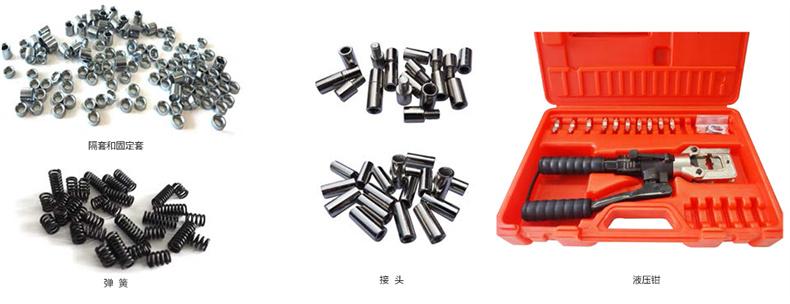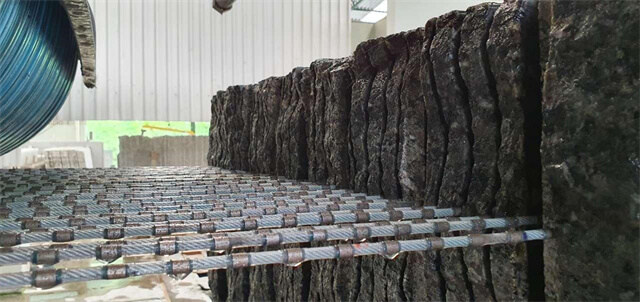Author:Huada Quarrying Machine FROM:Stone quarry machine manufacturer TIME:2024-11-22
In the realm of cutting materials, diamond wire cutting has emerged as a revolutionary technique, particularly in industries such as stone, concrete, and even metal processing. This method utilizes a wire embedded with diamond segments, allowing for precision and efficiency that often surpasses traditional cutting methods. As industries evolve and demand higher performance and lower operational costs, understanding how the cutting speed of diamond wire compares to more conventional techniques is crucial. This article delves into the mechanisms behind diamond wire cutting, its advantages over traditional methods, and the factors influencing cutting speed.
Diamond wire cutting involves a series of diamond particles bonded to a wire, which runs through a system of pulleys and guides. The cutting action occurs as the wire moves rapidly against the material, effectively grinding through it rather than slicing, which is common with traditional saw blades. This technique allows for a finer cut, reduced kerf loss, and the ability to make intricate shapes and sections. The versatility of diamond wire makes it suitable for various materials, including hard stones like granite and marble, as well as reinforced concrete and metals.

One of the primary advantages of diamond wire cutting is its superior cutting speed compared to traditional methods, such as circular saws or abrasive blades. While traditional methods may require significant force and time to cut through dense materials, diamond wire's unique mechanism allows for faster penetration. The cutting speed can be influenced by several factors, including the type of material being cut, the diameter of the wire, and the specific design of the diamond segments.

Several factors contribute to the cutting speed of diamond wire. First, the type of diamond segment used plays a crucial role. Segments designed for specific materials can enhance cutting efficiency, allowing for faster speeds. Additionally, the diameter of the wire affects performance; a thinner wire generally cuts faster but may sacrifice durability. Finally, the tension and speed at which the wire is operated can also impact cutting rates. Proper calibration ensures optimal performance, making it vital for operators to understand their equipment thoroughly.
The advantages of diamond wire cutting extend beyond just speed. This method generates less heat during operation, reducing the risk of thermal damage to sensitive materials. Furthermore, the precision offered by diamond wire minimizes waste, as the kerf—the width of the cut—tends to be narrower than that of traditional blades. This efficiency not only saves material costs but also enhances overall project timelines, making diamond wire cutting an attractive option for contractors and manufacturers alike.
Diamond wire cutting has found applications in various fields, including construction, mining, and manufacturing. For instance, in the stone industry, it revolutionizes the extraction and shaping of natural stone blocks, allowing for intricate designs that would be challenging with traditional methods. In the manufacturing sector, diamond wire is used for precise cutting of delicate components, particularly in electronics and aerospace industries. The impact of this cutting technology on productivity and quality cannot be overstated, positioning it as a preferred choice across multiple sectors.
While diamond wire cutting offers numerous benefits, maintenance practices are essential to ensure longevity and optimal cutting speed. Regular inspection of the wire for wear and tear, proper lubrication of the machinery, and adherence to recommended operating speeds can significantly extend the life of the wire and maintain its cutting efficiency. Operators must be trained to recognize signs of wear, which can affect both speed and quality of the cut.
Despite its many advantages, diamond wire cutting is not without challenges. The initial investment in diamond wire technology can be substantial, potentially deterring smaller companies from adopting it. Additionally, the need for skilled operators who understand the intricacies of the machinery adds another layer of complexity. There are also situations where traditional methods still prevail, particularly in projects requiring heavy-duty cutting where speed is less critical than raw power.

In conclusion, the cutting speed of diamond wire represents a significant advancement over traditional cutting methods. With its capability for faster, more precise cuts and reduced material waste, diamond wire cutting is poised to play an increasingly important role in various industries. While challenges remain—such as initial costs and the requirement for skilled operation—the benefits often outweigh these drawbacks, leading to enhanced productivity and efficiency. As technology continues to evolve, it is likely that diamond wire cutting will become even more prevalent, setting new standards for quality and performance in material processing.